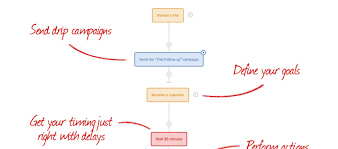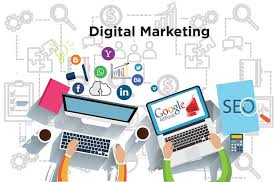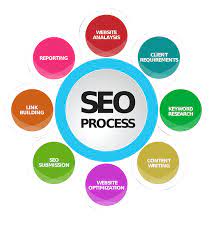Email Funnel: A Powerful Tool for Effective Marketing
Email marketing is a popular and effective way to promote products and services, and it has been proven to be one of the most reliable methods to generate leads and increase sales. However, sending out random emails to your subscribers without a clear strategy will not yield the desired results. This is where email funnels come into play.
An email funnel is a series of emails that are sent out in a specific sequence with the aim of guiding subscribers towards taking a desired action, such as making a purchase or signing up for a service. It is designed to take potential customers through different stages of the buying process, from awareness to consideration and finally decision-making.
The email funnel typically consists of three stages: top-of-funnel (TOFU), middle-of-funnel (MOFU), and bottom-of-funnel (BOFU). Each stage requires different types of content that cater to the needs of subscribers at that particular stage.
The TOFU stage is all about creating awareness among subscribers about your brand or product. The content in this stage should be educational and informative, with the aim of attracting new subscribers. Examples of TOFU content include blog posts, infographics, and social media posts.
The MOFU stage is where you build trust with your subscribers by providing them with more detailed information about your product or service. This could include case studies, webinars, or eBooks that demonstrate how your product or service can solve their problems.
Finally, the BOFU stage is where you convert leads into customers. This stage requires more direct sales-oriented content such as product demos, free trials, or limited-time offers.
To create an effective email funnel, you need to understand your target audience’s needs and preferences. You should segment your subscriber list based on demographics or behavior so that you can tailor your content accordingly. Personalization is key when it comes to email marketing because it helps build stronger relationships with your subscribers.
Another important aspect of email funnels is timing. You need to ensure that your emails are sent out at the right time to maximize their impact. Automated email marketing tools can help you schedule your emails so that they are sent out at the optimal time for each subscriber.
In conclusion, email funnels are a powerful tool for effective marketing. They help guide subscribers through the buying process and can significantly increase conversion rates. By understanding your target audience’s needs and preferences, segmenting your subscriber list, and timing your emails correctly, you can create a successful email funnel that generates leads and drives sales for your business.
Maximizing Your Email Funnel: 6 Tips for Success
- Create a compelling subject line – Make sure your subject line accurately reflects the content of the email and is interesting enough to make people want to open it.
- Include a clear call-to-action – Make sure you include a clear call-to-action in each email so that your readers know what action they should take next.
- Personalize emails – Use personalization tools to customize emails for each recipient, such as using their first name or referring to past interactions with them.
- Segment your list – Segmenting your list allows you to send more targeted messages that are more likely to be relevant and engaging for each person on the list.
- Test different versions of emails – Experiment with different versions of emails, such as changing the subject line or body copy, and measure which version performs best before sending out the final version of an email campaign.
- Monitor results – Track key metrics such as open rate, click rate, bounce rate, etc., so that you can identify opportunities for improvement in future campaigns
Create a compelling subject line – Make sure your subject line accurately reflects the content of the email and is interesting enough to make people want to open it.
Creating a Compelling Subject Line for Your Email Funnel
When it comes to email marketing, the subject line is one of the most critical components of your email. It is the first thing that subscribers see when they receive your email, and it can determine whether or not they open it. Therefore, creating a compelling subject line is essential to the success of your email funnel.
The subject line should accurately reflect the content of your email and be interesting enough to make people want to open it. It should be short, concise, and attention-grabbing. Avoid using spammy words or phrases that could trigger spam filters or make your email appear unprofessional.
One way to create an effective subject line is by using personalization. Addressing subscribers by their name or using other personalized information can increase open rates and engagement. You could also use urgency or scarcity tactics such as limited-time offers or exclusive deals to create a sense of urgency among subscribers.
Another effective technique is to ask a question in your subject line. This can pique subscribers’ curiosity and encourage them to open the email to find out more. You could also use humor, emoticons, or emojis in your subject line to make it more engaging and memorable.
It’s important to test different subject lines to see what works best for your audience. A/B testing involves sending two different versions of an email with different subject lines to a small group of subscribers and then analyzing which one performs better before sending out the final version.
In conclusion, creating a compelling subject line is crucial for the success of your email funnel. It should accurately reflect the content of your email while being interesting enough to make people want to open it. By using personalization, urgency tactics, questions, humor, emoticons, or emojis in your subject lines and testing different versions with A/B testing, you can increase open rates and engagement with your audience.
Include a clear call-to-action – Make sure you include a clear call-to-action in each email so that your readers know what action they should take next.
Email marketing is a great way to promote your products and services, but it’s important to have a clear strategy in place to ensure that your emails are effective. One key aspect of any email funnel is including a clear call-to-action (CTA) in each email.
A call-to-action is a statement that encourages the reader to take a specific action, such as clicking on a link or making a purchase. Including a clear CTA in each email can help guide your subscribers towards the desired action, whether it’s signing up for a free trial or making a purchase.
When creating your CTA, it’s important to be clear and concise. Use action-oriented language and make sure that the reader knows exactly what they’re supposed to do next. For example, instead of using vague language like “click here,” use more specific language like “sign up now” or “get started today.”
It’s also important to make sure that your CTA stands out visually. Use contrasting colors or bold text to draw attention to the CTA and make it easy for the reader to find.
Including a clear call-to-action in each email can significantly increase the effectiveness of your email funnel. By guiding your subscribers towards the desired action, you can generate more leads and drive sales for your business. So don’t forget to include an effective CTA in every email you send!
Personalize emails – Use personalization tools to customize emails for each recipient, such as using their first name or referring to past interactions with them.
Personalize Emails: A Simple Tip to Improve Your Email Funnel
Email marketing has become an essential tool for businesses to engage with their customers and drive sales. However, with so many emails flooding inboxes every day, it can be challenging to stand out from the crowd. One effective way to make your emails more engaging is by personalizing them.
Personalization tools allow you to customize your emails for each recipient, making them feel more relevant and tailored to their needs. By using a subscriber’s first name or referring to past interactions with them, you can create a more personalized experience that resonates with them on a deeper level.
Personalized emails have been shown to have higher open and click-through rates than generic ones. This is because they capture the recipient’s attention and make them feel valued as an individual rather than just another email address on a list.
There are several ways you can personalize your emails. You can use the subscriber’s name in the subject line or greeting, include content that is relevant to their interests or purchase history, or even recommend products based on their previous purchases.
Personalization tools make it easy to implement these strategies by automating the process of creating customized content for each subscriber. This saves time and effort while still providing a personalized experience for your subscribers.
In conclusion, personalizing your emails is a simple yet effective way to improve your email funnel’s performance. By using personalization tools to customize your content for each recipient, you can create a more engaging experience that drives higher open and click-through rates. So why not give it a try? Your subscribers will thank you for it!
Segment your list – Segmenting your list allows you to send more targeted messages that are more likely to be relevant and engaging for each person on the list.
Segmenting Your List: The Key to Effective Email Funnels
Email marketing is a powerful tool for businesses looking to generate leads and increase sales. However, sending out generic emails to your entire subscriber list is not an effective strategy. To maximize the impact of your email funnel, you need to segment your list.
Segmenting your list means dividing your subscribers into smaller groups based on specific criteria such as demographics, interests, or behavior. This allows you to send more targeted messages that are more likely to be relevant and engaging for each person on the list.
For example, if you have an online store that sells clothing for men and women, you could segment your list based on gender. This way, you can send targeted emails featuring products that are specifically designed for men or women.
Segmentation also allows you to tailor your content based on where subscribers are in the buying process. For example, if a subscriber has already made a purchase from your store, you can send them emails featuring related products or offering exclusive discounts.
By sending more targeted messages, you can increase engagement and conversion rates. Subscribers are more likely to take action when they receive emails that speak directly to their interests and needs.
In conclusion, segmenting your list is a crucial step in creating effective email funnels. It allows you to send more targeted messages that are more likely to resonate with subscribers and drive conversions. Take the time to understand your audience’s needs and preferences so that you can create segmented lists that deliver results for your business.
Test different versions of emails – Experiment with different versions of emails, such as changing the subject line or body copy, and measure which version performs best before sending out the final version of an email campaign.
One of the most important tips for creating an effective email funnel is to test different versions of emails. This means experimenting with different subject lines, body copy, and other elements to see which version performs best before sending out the final version of an email campaign.
Testing different versions of emails can help you optimize your email marketing strategy and improve your conversion rates. By measuring the performance of each version, you can identify what works best for your audience and refine your approach accordingly.
For example, you could try testing two different subject lines for the same email campaign and see which one generates more opens. Or you could experiment with different calls-to-action in the body copy to see which one leads to more clicks.
The key is to measure the results of each test so that you can make data-driven decisions about which version to use for your final email campaign. This will help you maximize the impact of your email funnel and ensure that it resonates with your target audience.
In conclusion, testing different versions of emails is a crucial step in creating an effective email funnel. By experimenting with different elements and measuring their performance, you can optimize your strategy and improve your conversion rates over time. So don’t be afraid to try new things and see what works best for your audience – it could make all the difference in achieving your marketing goals.
Monitor results – Track key metrics such as open rate, click rate, bounce rate, etc., so that you can identify opportunities for improvement in future campaigns
When it comes to email marketing, monitoring your results is crucial to the success of your campaign. By tracking key metrics such as open rate, click rate, and bounce rate, you can gain valuable insights into how your subscribers are engaging with your content.
Open rate refers to the percentage of subscribers who opened your email. This metric can help you determine the effectiveness of your subject line and whether it is captivating enough to entice subscribers to open your email.
Click rate measures the percentage of subscribers who clicked on a link within your email. This metric can help you determine which links are most popular among your subscribers and what type of content they find most engaging.
Bounce rate refers to the percentage of emails that were undeliverable and returned to the sender. A high bounce rate can indicate issues with your email list or delivery system, which may require further investigation.
By monitoring these key metrics, you can identify opportunities for improvement in future campaigns. For example, if you notice a low open rate, you may want to consider revising your subject line or sending out emails at a different time of day when more subscribers are likely to be active.
Similarly, if you notice a low click-through rate, you may want to re-evaluate the content in your emails and ensure that it aligns with the interests and needs of your target audience.
In conclusion, monitoring results is an essential part of any successful email funnel. By tracking key metrics such as open rate, click rate, and bounce rate, you can gain valuable insights into how your subscribers are engaging with your content and identify opportunities for improvement in future campaigns. With this information at hand, you can refine your strategy and create more effective email campaigns that drive engagement and increase conversions.




